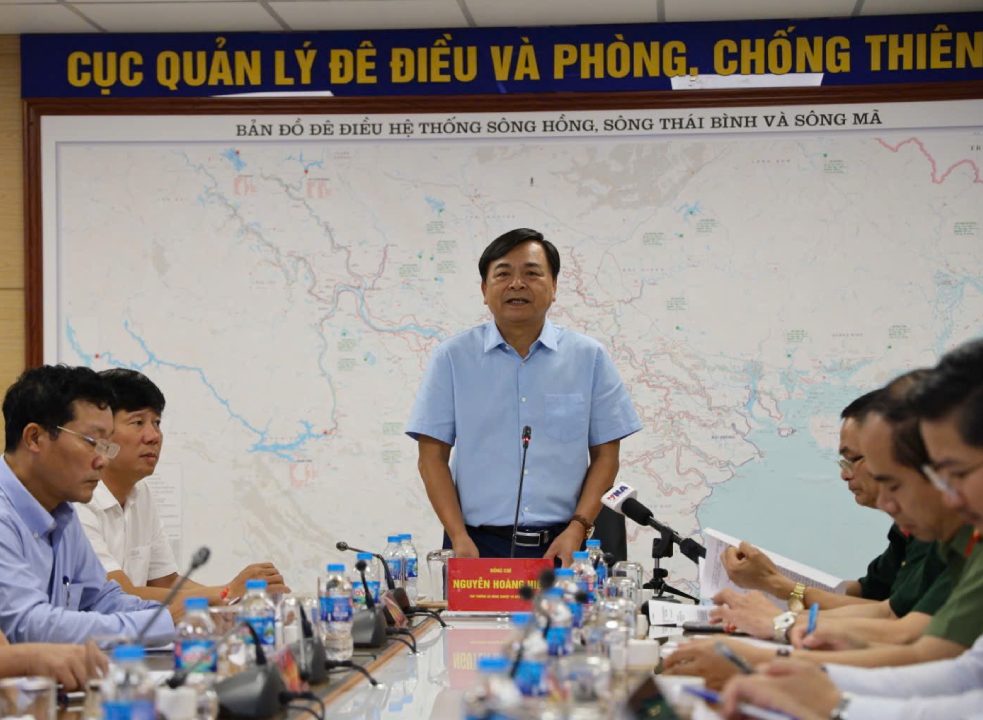At the meeting to respond to storm No. 1 and heavy rain organized by the Ministry of Agriculture and Environment this afternoon, June 11, Deputy Minister Nguyen Hoang Hiep pointed out the unusual point of the storm, although it is only storm No. 1 but forms right in the East Sea. Typically, Typhoon No. 1 appears off the coast of the Philippines before entering.

According to the National Center for Hydro-Meteorological Forecasting, up to now, the storm is unlikely to make landfall, but it still needs to be closely monitored because the direction of movement may change.
"Although it will not make landfall, the storm will cause widespread heavy rain in the Central region and the Central Highlands. The heavy rain area stretches from Quang Binh to Quang Ngai, focusing on Da Nang, Hue, Quang Nam. The Central Highlands also has heavy rain, especially in Gia Lai and Kon Tum" - the Deputy Minister emphasized.
The average rainfall is about 100 - 200mm, some places may reach 300 - 350mm. Characteristics of not lasting rain but occurring in large numbers, concentrated in short periods of time, causing unusual rain at different times.
"A noteworthy point is that the storm comes while the area is in drought. This easily makes people subjective, thinking that having rain is good. But I emphasize that this rain will be very unusual and can cause flooding, flash floods and landslides, we cannot be subjective" - Deputy Minister Nguyen Hoang Hiep analyzed.
Faced with the situation of having to respond to storm prevention both at sea and on land, Deputy Minister Nguyen Hoang Hiep has suggested that localities take synchronous action with a number of key task groups.
First of all, it is necessary to strictly implement the Prime Minister's Official Dispatch 86. Absolutely do not let the organization of the apparatus and the arrangement of local models affect natural disaster prevention work.
Second, the Border Guard and localities must ensure the safety of ships, call on ships to take safe shelter, and not leave any vehicles in the danger zone. Note that this time there is a subjective mentality because the storm did not make landfall. However, ships going in the wrong direction or encountering mechanical problems in the middle of the sea will be extremely dangerous, especially if the storm changes direction unexpectedly. Therefore, it is necessary to relocate soon.
Third, focus not to be subjective, organize the evacuation of people, prepare response forces to evacuate people from dangerous areas. Localities need to clearly identify frequent flooded areas, especially in Hue, Da Nang, Quang Nam, part of Kon Tum... so that people can proactively raise their belongings and move their vehicles to higher ground.
The National Center for Hydro-Meteorological Forecasting must regularly provide local accurate rain information 3 to 6 hours in advance to the communes and wards, so that people can respond in time.
Four is to ensure traffic safety, protect main roads, especially National Highway 1 - which is often cut off due to floods. The Ministry of Construction and the Ministry of Public Security have plans to divert traffic and arrange forces on site to regulate and rescue if there are incidents.
Fifth is to ensure the safety of essential works and headquarters, especially works under construction, many works are under construction outdoors, and there needs to be a plan to ensure the safety of workers, machinery, and equipment. Avoid accidents caused by landslides and floods as in previous cases.
Six are localities that ensure the safety of reservoirs and urban drainage. Currently, hydroelectric reservoirs with flood prevention capacity are not a cause for concern. However, it is still necessary to closely monitor some lakes that are accumulating water of 75 80%, avoiding subjective psychology. This rain has a flood warning on rivers at alert level 1.
Major cities such as Hue, Da Nang... need to proactively drain water early because these places are often flooded every time it rains. Wherever there is a possibility of drainage first, it should be done immediately to minimize damage.
In addition, the National Steering Committee for Civil Defense and the Ministry of Agriculture and Environment have issued many telegrams, which localities need to seriously implement.











